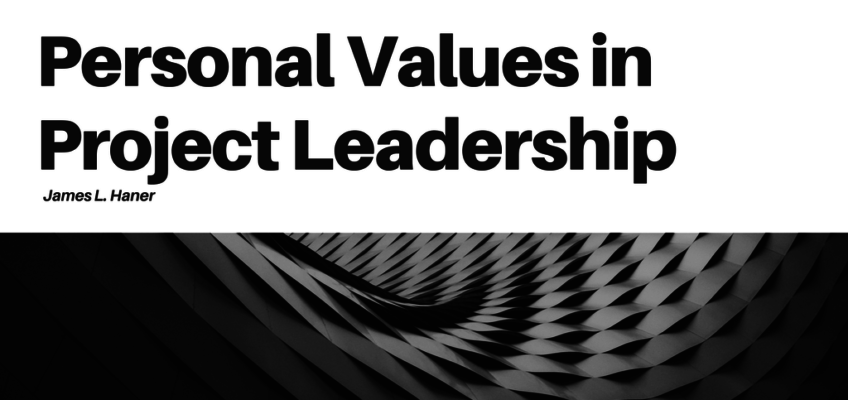Written by James L. Haner, a PMIWIC member
What aspects of your job are most important to you?
Knowing what we value most in our work, relationships, and other commitments makes it easier to respond to opportunities and conflicts with honor. The Value Sort approach is an excellent way to reflect upon what is most important to you personally and it is also a great way to stimulate conversations with project team members.
Project team members constantly seek personal value in their work. Their personal values are what they want their work life to be about. Your challenge: Learn what they value as part of their self-interest. Why? When you are thinking about making changes: team member training, project assignments, and job expectations, it is best to match project goals to what is important to each member of the team.
We also must be careful in not offering too much value. It may be too good to be true, thereby, increasing risk and eroding believability.
All of us, personally or organizationally, commit ourselves to change based on our own self-interest. We cannot satisfy someone else’s expectation for change or certain behaviors until we know how it will personally benefit us.
This also implies listening actively for their desired result/outcome and attempting to dovetail your desired result/outcome with theirs.
We don’t wear our values on our sleeves; therefore, effort must be expended in getting to know our teammates.
One way to increase the extent to which we act in line with our values is to clearly identify what they are, and then work to keep them more in our conscious awareness.
Here is a fun, engaging, and introspective activity to sort out personal values. It can be done in 15 to 20 minutes.
The Value Sort exercise is relatively straightforward. Tell your team, “We will be using an exercise to help you figure out what is most important to you at work.” The benefit of this is to identify connections, between your work and the values you have identified as most important. Provide each project team member with a card set of different values using the attached file.
Honesty, Integrity, Friendship, Reputation, Harmony, Power, Acceptance, Openness, Trust, Social Status, Organized, Physical appearance, Personal space, Reputation, Variety, Success, Recognition, Financial security, Fun (humor), Excitement, Family, Religion, Respect, Challenge, Autonomy, Achievement, Blank, Blank, Blank (in case we missed a value)
If someone values the great outdoors, or the planet, etc., then that would be a driver as to what they value.
Step 1. Ask your teammates to sort the values based on those that are most important to them now. Let teammates fill in any additional values on the blank cards as appropriate.
Step 2. Now instruct teammates to choose their top three. In sub-groups, have them use double-sided adhesive tape to affix their cards to a flip chart next to their name.
Why do you want to do this?
First: To better understand and appreciate how values differ for each project team member. This benefits the project by aligning project work and values.
Second: To develop greater insight and understanding of your own values, to clarify what you want at work.
Debriefing: Be sure to bring out the differences in top values that people hold.
Discuss: How the top three values can change for a person from situation to situation and at different times of their lives. There is no right answer. People are not wrong for having a different list of their top three values. If your work doesn’t seem to fit with your top values right now, it might be time to focus on something that does fit, decide to address it later, or ponder the connection over the next few weeks.
I hope this exercise will facilitate a discussion of values and goals between you and your project team members. It is intended to develop an understanding of a discrepancy between a deeply held belief and a current behavior so that you can engage the team.
The original work on values is described by Miller, C’de Baca, Matthews and Wilbourne (2001; casaa.unm.edu).

